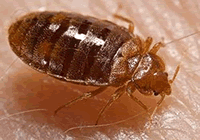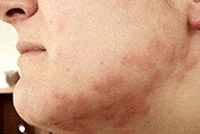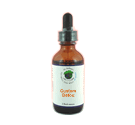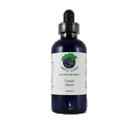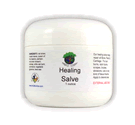|
|
Bed Bug Detox Information
All insects in this family live by feeding exclusively on the blood of warm-blooded animals. The name "bed bug" is derived from the insect's preferred habitat of houses, especially beds or other areas where people sleep. Bed bugs are not strictly nocturnal, but are usually active at night and are capable of feeding unnoticed on their hosts. They have been categorized under a variety of names including: wall louse, mahogany flat, crimson rambler, heavy dragoon, chinche and redcoat.
Bed bugs are attracted to their hosts primarily by carbon dioxide, then by warmth or by certain chemicals. It takes between five to ten minutes for a bed bug to become completely engorged with blood and return to its hiding place. Although bed bugs can live for a year without feeding, they normally try to feed every five to ten days. In cold weather bed bugs can live for about a year. In temperatures that are more conducive to activity and feeding, their life span is about 5 months.
Bed bugs have been recognized as human parasites for thousands of years. Bed bug bites or cimicosis can lead to a range of skin manifestations from no visible effects to prominent blisters. A number of health effects may occur due to bed bugs including: skin rashes, psychological effects, and allergic reactions. They are able to be infected by at least 28 human pathogens, including MRSA! Bed bugs are elusive and usually nocturnal, which can make them hard to spot. They often lodge unnoticed in dark crevices and eggs can be nestled in fabric seams. In addition to bite sites, signs include: fecal spots, blood smears on sheets, and molts.
Dwellings can become infested with bed bugs in these various ways:
- Bugs and eggs that "hitchhiked in" on pets, clothing and luggage
- Infested items, like furniture or clothing, when purchased
- Nearby dwellings or infested items, if there are easy routes (through duct work or false ceilings)
- Wild animals (such as bats or birds)[39][40]
- People visiting from a source of infestation as bed bugs, like roaches, are transferred by clothing, luggage, or a person's body.
Bed bugs can inhabit solely, but often congregate once established. They usually remain close to hosts, commonly in or near beds or couches. Harborage areas can vary greatly and may include luggage, vehicles, furniture and bedside clutter. Bed bugs may also inhabit near animals that have nested within a dwelling such as bats, birds, or rodents. The eggs of bed bugs are found in similar places where the bed bugs themselves are found and attach to surfaces by a sticky substance.
Bed bugs can be detected by their characteristic smell of cilantro, coriander, almonds or over-ripe raspberries. If you suspect bed bugs, there are several ways to destroy them:
- Diatomaceous Earth. According to many reports, diatomaceous earth has been proven to be an effective bed bug killer for the home. This insecticide, made from the fossilized remains of hard-shelled algae, is both environmentally friendly and non-toxic. The diatomaceous earth fine powder contains razor sharp particles that cut the waxy cuticle covering the bed bugs' exosekeleton, causing them to die with contact. Apply diatomaceous earth along the base boards and rub it in the carpets after each vacuuming to eliminate and prevent the spread of bed bugs. It is not harmful or toxic to humans in any way.
- Heat & Steam. Heat is highly effective at exterminating bed bugs and their eggs. Like humans, bed bugs cannot survive extreme heat. The thermal death point for the common bed bug is 120 °F so washing bed linens and clothes in the dryer with this thermal setting will generally kill all bed bugs. For larger items that cannot be washed with hot water such as mattresses, the use of hot steam from a professional grade bed bug steamer is effective at killing bed bugs and their eggs instantaneously even if they are hidden deep within the pores of the mattress. To be an effective bed bug steamer, experts recommend that the steam from the cleaner needs to be above 200 °F. The 120 °F temperature will kill bed bugs on contact, but not those that are hidden deep inside a mattress or sofa.
- Mattress Encasement. One study showed that after 10 years, a mattress could weigh many pounds more than it did when you bought it just from the amount of bed bugs living in it. If you are getting bitten regularly from bed bugs, buy a new mattress or bed bug mattress covers that are an effective non-chemical remedy to get immediate relief and comfort from the bed bug bites. These encasements seal off the entire mattress leaving no gap for the bed bugs to enter or escape through. These encasements should also be used for your pillows as well. You will need to keep the covers on for at least a year to eventually kill any bed bugs trapped within.
- Red Cedar Oil. Often used by the military as a safe, effective remedy for repelling bed bugs, you can find this online and use as directed.
If you suspect your house is infested:
- Rent a professional steamer and steam your entire house.
- Steam or wrap your mattress, then pull the bed away from the wall to prevent bed bugs from crawling from the wall onto the bed.
- Apply double-sided duct tape around each leg of the bed to act as a sticky barrier from the crawling bugs. Do not let any clothing or items hang off the bed and touch the floor.
- Keep all animals out of your home.
NEVER let pets sleep in your bed and it is best that they do not sleep in your favorite chair or sofa. Our Bed Bug Remedy helps the body detoxify the various toxins that can be transferred to humans through the Bed Bug Bite.
Remember that our Liquid Detox is one of the most effective remedies for treating/healing bites and wounds. It is powerful at helping reduce pain, swelling and itching, and is very effective at preventing infection. You can apply it directly to the bite or wound or soak the absorbent part of a band aid (3-5 drops) in Liquid Detox and apply it to the bite or wound.
|
|
|
 Arthropod/Vector
Bacteria
Chemicals
Fungus /Mold
/ Yeast Metals Parasites Virus Other
Arthropod/Vector
Bacteria
Chemicals
Fungus /Mold
/ Yeast Metals Parasites Virus Other
